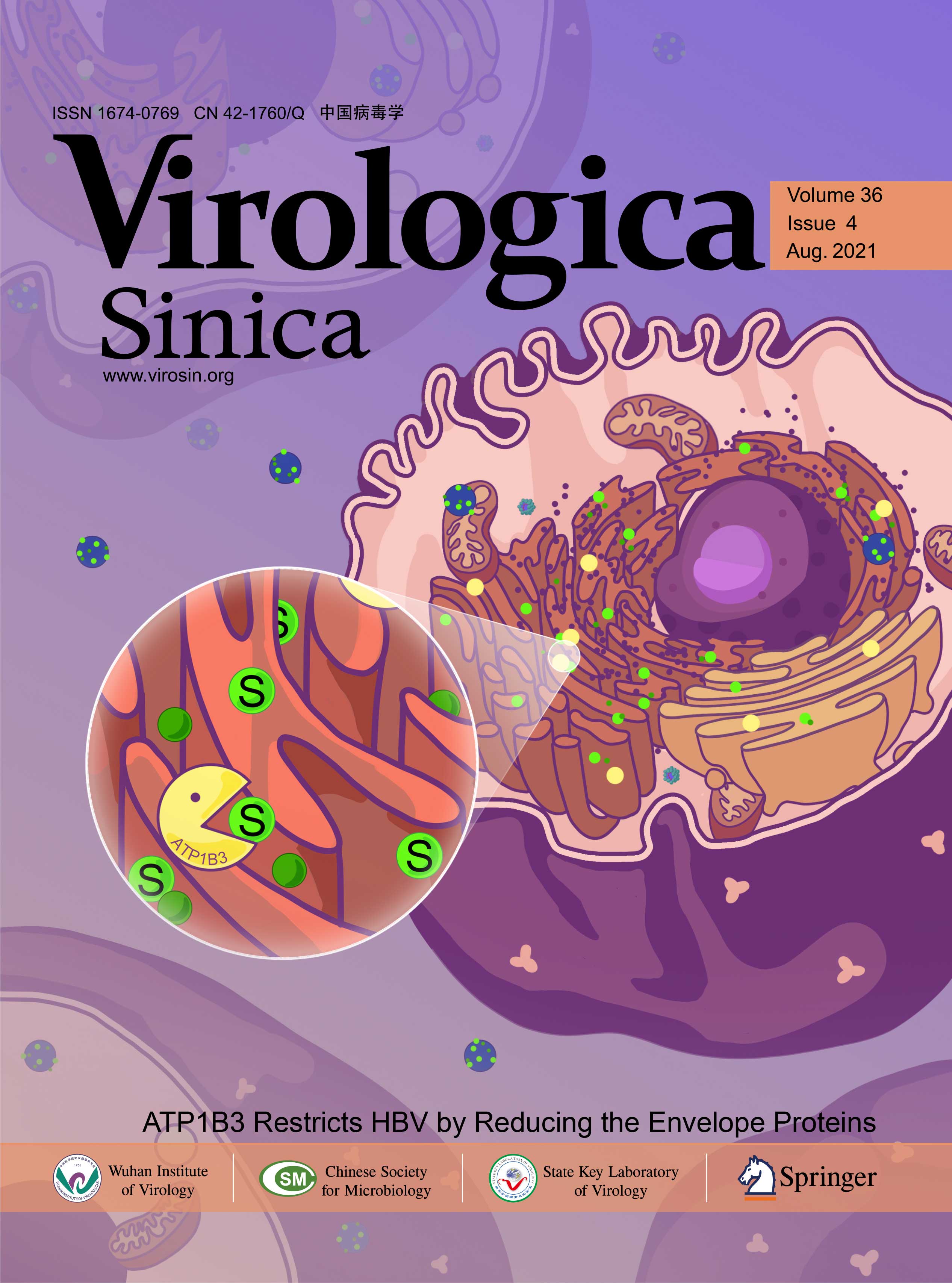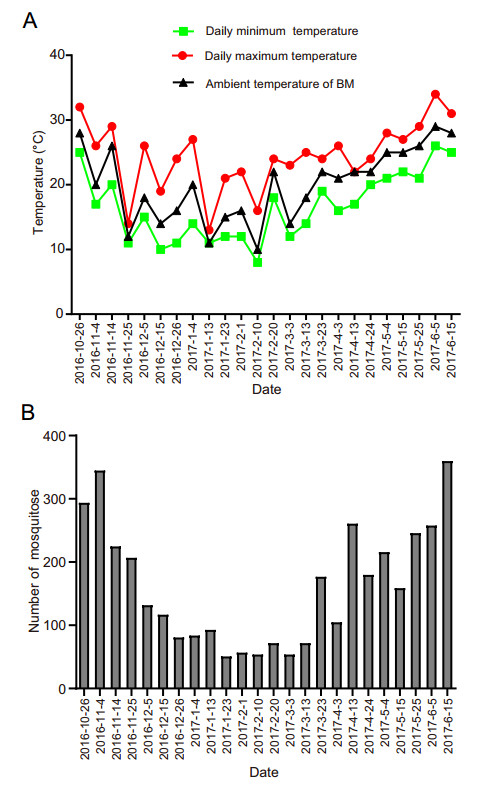-
Ayllón T, Câmara D, Morone FC, Gonçalves L, Monteiro S, de Barros F, Brasil P, Carvalho MS, Honório NA (2018) Dispersion and oviposition of Aedes albopictus in a Brazilian slum: initial evidence of Asian tiger mosquito domiciliation in urban environments. PLoS ONE 13: e0195014
doi: 10.1371/journal.pone.0195014
-
Bai Z, Liu LC, Jiang L, Luo L, Feng H, Lin P, Jing Q, Xiao X, Zhou H, Su W, Cao Y, Li Y, Cao Q, Chen W, Di B, Yang Z (2018) Evolutionary and phylodynamic analyses of Dengue virus serotype I in Guangdong Province, China, between 1985 and 2015. Virus Res 256: 201-208
doi: 10.1016/j.virusres.2018.07.005
-
Chen Y, Gao J, Yang L, Li C, Chen R, Xie Z, Ren R (2019) A predominant dengue virus-1 endemic strain and the vector competence of Aedes albopictus from Guangzhou City, China. Acta Trop 199: 104975
doi: 10.1016/j.actatropica.2019.03.029
-
Duan HL, Yang J, Wang YG, Liu RR, Shi CN, Lu L, Liu QY (2017) The survival times of adult Aedes albopictus under different temperatures. Chin J Vector Biol Control 28: 205-208 (In Chinese)
-
Ferreira-de-Lima VH, Andrade P, Thomazelli LM, Marrelli MT, Urbinatti PR, Almeida R, Lima-Camara TN (2020) Silent circulation of dengue virus in Aedes albopictus (Diptera: Culicidae) resulting from natural vertical transmission. Sci Rep 10: 3855
doi: 10.1038/s41598-020-60870-1
-
Ferreira-de-Lima VH, Lima-Camara TN (2018) Natural vertical transmission of dengue virus in Aedes aegypti and Aedes albopictus: a systematic review. Parasit Vectors 11: 77
doi: 10.1186/s13071-018-2643-9
-
Goodman H, Egizi A, Fonseca DM, Leisnham PT, LaDeau SL (2018) Primary blood-hosts of mosquitoes are influenced by social and ecological conditions in a complex urban landscape. Parasit Vectors 11: 218
doi: 10.1186/s13071-018-2779-7
-
Hull B, Tikasingh E, de Souza M, Martinez R (1984) Natural transovarial transmission of dengue 4 virus in Aedes aegypti in Trinidad. Am J Trop Med Hyg 33: 1248-1250
doi: 10.4269/ajtmh.1984.33.1248
-
Li J, Li R, Wen W (2002) The study on the breeding habits of Aedes albopictus in Foshan City. Chin J Pest Control 18: 630-632 (In Chinese)
-
Li J, Hu DM, Ding XX, Chen Y, Pan YX, Qiu LW, Che XY (2011) Enzyme-linked immunosorbent assay-format tissue culture infectious dose-50 test for titrating dengue virus. PLoS ONE 6: e22553
doi: 10.1371/journal.pone.0022553
-
Li R, Xu L, Bjørnstad ON, Liu K, Song T, Chen A, Xu B, Liu Q, Stenseth NC (2019) Climate-driven variation in mosquito density predicts the spatiotemporal dynamics of dengue. Proc Natl Acad Sci USA 116: 3624-3629
doi: 10.1073/pnas.1806094116
-
Li Y, Zhou G, Zhong S, Wang X, Zhong D, Hemming-Schroeder E, Yi G, Fu F, Fu F, Cui L, Cui G, Yan G (2020) Spatial heterogeneity and temporal dynamics of mosquito population density and community structure in Hainan Island. China Parasit Vectors 13: 444
doi: 10.1186/s13071-020-04326-5
-
Lu L, Lin H, Tian L, Yang W, Sun J, Liu Q (2009) Time series analysis of dengue fever and weather in Guangzhou, China. BMC Public Health 9: 395
doi: 10.1186/1471-2458-9-395
-
Luo L, Jiang LY, Xiao XC, Di B, Jing QL, Wang SY, Tang JL, Wang M, Tang XP, Yang ZC (2017) The dengue preface to endemic in mainland China: the historical largest outbreak by Aedes albopictus in Guangzhou, 2014. Infect Dis Poverty 6: 148
doi: 10.1186/s40249-017-0352-9
-
Pang T, Mak TK, Gubler DJ (2017) Prevention and control of dengue-the light at the end of the tunnel. Lancet Infect Dis 17: e79-e87
doi: 10.1016/S1473-3099(16)30471-6
-
Sang S, Chen B, Wu H, Yang Z, Di B, Wang L, Tao X, Liu X, Liu Q (2015) Dengue is still an imported disease in China: a case study in Guangzhou. Infect Genet Evol 32: 178-190
doi: 10.1016/j.meegid.2015.03.005
-
Shroyer DA (1990) Vertical maintenance of dengue-1 virus in sequential generations of Aedes albopictus. J Am Mosq Control Assoc 6: 312-314
-
Sun J, Lu L, Wu H, Yang J, Xu L, Sang S, Liu Q (2017) Epidemiological trends of dengue in mainland China, 2005-2015. Int J Infect Dis 57: 86-91
doi: 10.1016/j.ijid.2017.02.007
-
Teixeira Mda G, Barreto ML, Costa Mda C, Ferreira LD, Vasconcelos PF, Cairncross S (2002) Dynamics of dengue virus circulation: a silent epidemic in a complex urban area. Trop Med Int Health 7: 757-762
doi: 10.1046/j.1365-3156.2002.00930.x
-
Tewari SC, Thenmozhi V, Katholi CR, Manavalan R, Munirathinam A, Gajanana A (2004) Dengue vector prevalence and virus infection in a rural area in south India. Trop Med Int Health 9: 499-507
doi: 10.1111/j.1365-3156.2004.01103.x
-
Wu S, Ren H, Chen W, Li T (2019) Neglected urban villages in current vector surveillance system: evidences in Guangzhou, China. Int J Environ Res Public Health 17: 2
doi: 10.3390/ijerph17010002
-
Xia H, Wang Y, Atoni E, Zhang B, Yuan Z (2018) Mosquito-Associated Viruses in China. Virol Sin 33: 5-20
doi: 10.1007/s12250-018-0002-9
-
Yang L, Chen Y, Yan H, Zhang P, Xu X, Tang B, Zhao P, Ren R (2015) A survey of the 2014 dengue fever epidemic in Guangzhou. China Emerg Microbes Infect 4: e57
-
Yang D, He Y, Ni W, Lai Q, Yang Y, Xie J, Zhu T, Zhou G, Zheng X (2020) Semi-field life-table studies of Aedes albopictus (Diptera: Culicidae) in Guangzhou. China PLoS One 15: e0229829
doi: 10.1371/journal.pone.0229829
-
Zhang Z, Jing Q, Chen Z, Li T, Jiang L, Li Y, Luo L, Marshall J, Yang Z (2019) The increasing menace of dengue in Guangzhou, 2001-2016: the most important epicenter in mainland China. BMC Infect Dis 19: 1002
doi: 10.1186/s12879-019-4504-3
-
Zheng X, Zhong D, He Y, Zhou G (2019) Seasonality modeling of the distribution of Aedes albopictus in China based on climatic and environmental suitability. Infect Dis Poverty 8: 98
doi: 10.1186/s40249-019-0612-y
-
Zhong XS, Xiao XL, Xiang YF, Cai GC, Liu ZM, Peng JQ, Huang LY (2019) Investigation the over-winter breeding ground and larva survival of Aedes albopictus in Yuexiu District, Guangzhou City. South China J Pre Med 45(386-388): 397 (in Chinese)













